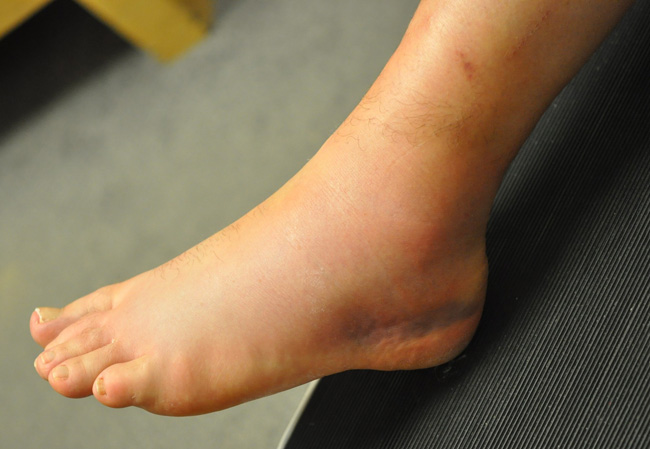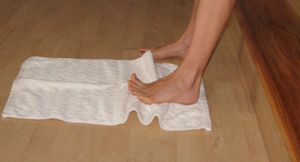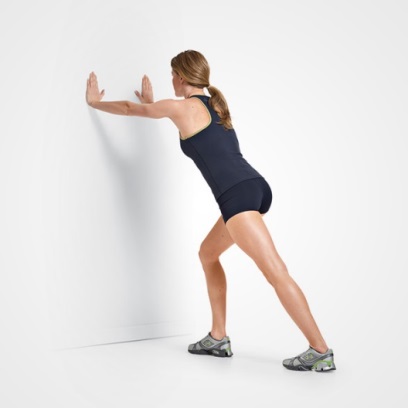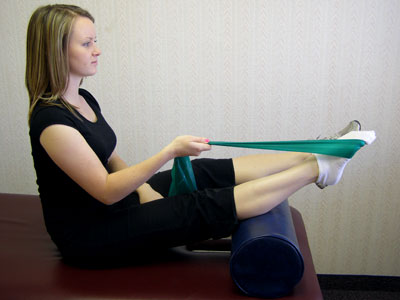Pushing yourself to your limits when exercising c an be detrimental if you already have an injured ankle. Push too much and you may end up a lot worse than you started off. However, you don’t have to give up physical activity completely because of your injury. The key is to know how to do it properly.
an be detrimental if you already have an injured ankle. Push too much and you may end up a lot worse than you started off. However, you don’t have to give up physical activity completely because of your injury. The key is to know how to do it properly.
Rest Is Essential for Ankle Sprain
Just like other injuries, rest is vital to a full recovery. Your ankle needs time to heal, which can be hard because you need it to get around. However, without rest, the injured tissue won’t be able to repair itself. There are many devices designed to give your ankle a break by offering it support. For example, there are walking boots and braces. The area can also be taped in a specific way that provides extra support.
Typically, the earliest part of treatment is the most critical. While crutches may not be needed, you may utilize a walking boot. At this point, when considering how to exercise with a sprained ankle, you need to keep in mind you cannot run, jump, bike, use a treadmill or perform any activity that is considered a pounding exercise. Doing so will impede your recovery and may even make your injury worse.
Rehabilitation Exercises to Do with an Ankle Sprain
To reach a full recovery, rehabilitation exercises are key. If your ankle does not heal all the way, it is more susceptible to being injured again. Simply going for walks is a good start. As you feel stronger, you can bear some of your body weight with the help of crutches. Slowly add more, using your pain level as an indicator on when to stop. If you experience too much pain, stop immediately. You can return to that specific exercise when you have healed longer.
1. Start with Mobility Exercises
 Shortly after your injury, you will learn how to exercise with a sprained ankle. The first of these will be mobility exercises, also known as range of motion. Work your way up to doing them five times a day, applying ice after done. They can be performed while sitting so you can do them in a wide range of environments.
Shortly after your injury, you will learn how to exercise with a sprained ankle. The first of these will be mobility exercises, also known as range of motion. Work your way up to doing them five times a day, applying ice after done. They can be performed while sitting so you can do them in a wide range of environments.
- Simple Mobility Exercises. To promote movement, use your toe to trace the letters of the alphabet. Repeat up to three times. To assist with mobility, sit in a solid chair. Place your foot on the floor, keeping it flat. Move your knee slowly from side to side. Make sure your foot remains flat. Repeat up to three times.
- Towel Curls. Sit down in a chair with the foot of your injured ankle on top of a flat towel. Using your toes, squeeze the towel towards you without lifting your foot. Use the same movements, but in the opposite direction, to push it away. As you gain strength, try placing a soup can or something of similar weight on the end of the towel furthest from your foot.
2. Progress to Stretching Exercises
 It is important to begin stretching exercises as soon as possible, as long as you can without it resulting in pain. The Achilles tendon runs from the base of your heel, up your ankle to the calf muscles of your lower leg. This area needs to be strong, as it is vital to movement. Two exercises good for this is the calf stretch and towel stretch, depending on your ability to stand.
It is important to begin stretching exercises as soon as possible, as long as you can without it resulting in pain. The Achilles tendon runs from the base of your heel, up your ankle to the calf muscles of your lower leg. This area needs to be strong, as it is vital to movement. Two exercises good for this is the calf stretch and towel stretch, depending on your ability to stand.
- Calf Stretch. Wanna know how to exercise with a sprained ankle? Try one of these. Place your hands on a wall in front of you at eye level, standing in place. Stand one leg straight while placing the leg with the injured ankle about one step behind it. Bend the knee of this leg while keeping the back heel of your foot to the ground. This will stretch the back of your leg. If possible, hold this position for up to 30 seconds and repeat up to four times. You can also perform this exercise with your back knee slightly bent to stretch various other areas of your lower leg and calf.
- Towel Stretch. If standing is still difficult, this exercise will help. Start off by sitting with the leg of injury in front of you. Straighten the leg out and put a towel that has been rolled beneath your toes and foot arch. This area is also referred to as the ball of the foot. Hold the ends of the towel. As you pull it inward, keep your knee in a straight position. Hold it for up to 30 seconds. Repeat this action up to 4 times. If it is hurts too much, stop immediately. You can slowly work your way up to it.
3. Work Towards Strengthening Exercises
 As soon as you can tolerate it and pain is at a minimum, you should start incorporating exercises that strengthen your ankle. At first, avoid movements that require sideway actions. You can add these later.
As soon as you can tolerate it and pain is at a minimum, you should start incorporating exercises that strengthen your ankle. At first, avoid movements that require sideway actions. You can add these later.
- Resisted Plantar Flex Exercise. Sit down with your legs in front of you. Put a resistance band or flexible cloth around your foot, holding the two ends in your hand. You start by pointing the foot with the injured ankle away from you slowly, returning it slowly back into its original position. Do up to 20 repetitions for up to 3 sets with a short resting period between each set. You can also do this exercise with a knee bent so that you can target your lower calf muscle.
- Resisted Dorsi Flex Exercise. Loop a rehab band around your foot and pull it while resisting with your foot as you pull it up. Lower it while still resisting. Do up to 20 repetitions for up to 3 sets with a short resting period between each set. While this exercise is great for building strength, make sure not to push it too hard. It can tire out your ankle, making it hard to walk afterwards.
- Calf Raise. When considering how to exercise with a sprained ankle, remember to start this one off using both legs. Simply raise yourself upward using your toes. Your goal is to do 10 repetitions for 3 sets. Once you build up your strength, try doing with only one leg at a time. Start slowly as this will be harder. Gradually work your way up to recommended reps and sets.
4. Add Functional Exercises
 Once you start gaining strength in your ankle, add functional exercises. These will help you reincorporate certain types of movement like sideway and lateral movements, as well as directional changes.
Once you start gaining strength in your ankle, add functional exercises. These will help you reincorporate certain types of movement like sideway and lateral movements, as well as directional changes.
- Heel to Toe Calf Raise. This exercise is designed to improve your balance while strengthening your injured ankle. As you put one of your feet in front of the other, raise it upward on tip toes. As you swing the back leg to the front, lift up on your tip toes once again. Keep doing this rotation of movements until you walk the length of the room.
- Step Back Exercise. Begin by finding a small step and stand on it. Step backward on one leg and touch your foot on the ground. Push off the floor using your forefoot as you place it back on the step. Repeat the same action using the other leg. You can make it harder by using a higher step or moving faster. Be careful not to push too hard or fast.
- Hopping Movement. This exercise can be performed in many manners and at varying difficulty levels. You can start simple with small hops in one spot. You can increase the distance of height to make it more difficult. Another version is hopping from side to side, or frontward and backward. As you get stronger, you can hop on one leg and then alternate to the other one. As you can, add equipment like agility ladders, hoops and hurdles.
